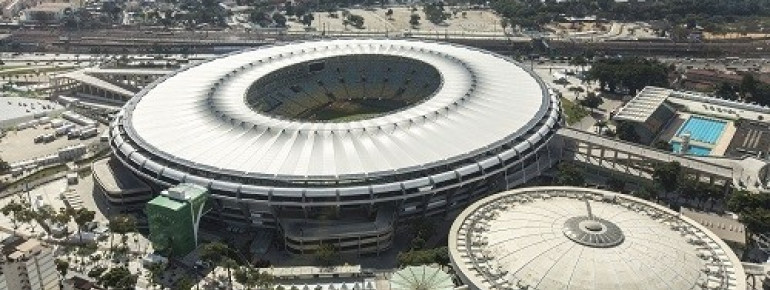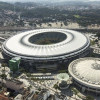Contents
Description
A Brasilian legend
The Maracanã stadium in Rio de Janeiro is probably the most well-known football stadium in the world – a national sanctuary! It has produced sports heroes, Péle scored his thousand's goal here and pop stars like Madonna or The Rolling Stones have performed here. Since the first goal, up to the sublime finale of the football world cup in 2014, which was won by the German national team, the Maracanã has been and remains a true cauldron of emotions.
Once with almost 200.000 seats the biggest football stadium in the world, it has been reconstructed into a modern arena during the past years, built to the highest standards. All of this of course bearing in mind the Olympic Summer Games 2016, which are to take place in the Estádio.
Excitement and dissapointment are as close together here as poor and rich, since even though Rio is characterised strongly by its social differences; in the football stadium everybody is the same. The gripping duells of Rio's two archrivals Flamengo and Fluminense are attended by half the city, which stands side by side on the newly furbished ranks, that now hold 78.000 people.
Named after the Maracanã river, the stadion has become a Brasilian legend and mirrors what defines the South American country: joy of life, music, religion, triumph and defeat are part of life here as much as of Brasilian football.
Historical Information
Everything began by awarding the football world cup to Brasil in 1950. An adequate stadium had to be built, and this as quickly as possible. After two years of construction, the stadium, being with 200.000 seats the biggest in the world, was finished just in time for the World Cup 1950.
The official name of the stadium is Estádio Jornalista Mário Filho, named after the Brasilian sports journalist Mário Filho, who strongly campaigned for the stadium to be built in the district Maracana and not in the western offset of the city. Today, the football temple is known by the name Estàdio Municipal do Maracanã, or simply Maracanã.
The trauma of 1950
For the „Seleçao“, the championships turned into a fiasco. In the World Cup final against Uruguay, the highly favoured Brasilians were defeated and missed their chance for the much wanted title. Until today this is seen as a traumatic event, still in the minds of the Cariocas. The Brasilian players must have felt similar after loosing 7:1 against the German national team during the World Cup 2014 – again in their home country...
In the years following 1950, the stadium has been renovated again and again, once in 2000, previous to the Panamerican Games and again in 2010, in order to prepare for the Football World Championships 2014 and the Summer Olympic Games 2016.
Interesting facts
- The day pass at The Maracanã stadium is BRL60 making it the cheapest tourist attraction in Brazil.
How to get there
By car
Generally it is not advised to drive to the stadium by car. The amount of traffic makes the transit difficult and is not an easy task for those unfamilar with the place. A better way to get there is by taking one of the many yellow taxis and allowing enough time advance.
By public transport
As Rio de Janeiro doesn't have a big subway network, it is relatively simple to get to the stadium. Line number 2 takes you direction Maracanã. To reach the west side, simply get off at the stop Maracanã stadium.
There are also two bus routes 464 and 435 who regularly go from the the Copacabana direction Maracanã.



